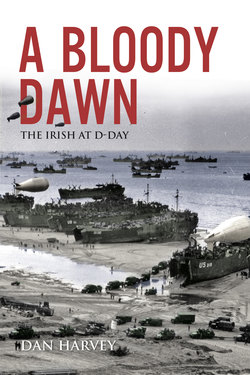Читать книгу A Bloody Dawn - Dan Harvey - Страница 9
На сайте Литреса книга снята с продажи.
ОглавлениеFOREWORD
When 22-year-old Private Edward Delaney O’Sullivan of the 22nd Independent (Pathfinder) Company of the Parachute Regiment touched down outside the little Normandy village of Touffreville around 4 am, 6 June 1944, he was the human vanguard of one of the greatest military advances in world history. Up until he landed, almost the entire Eurasian landmass, from the North Cape of Norway to the South China Sea and from Cadiz in the Eastern Atlantic to the Sea of Okhots in the Western Pacific, with the exception of the Alpine ambiguities of Switzerland and the Nazi-affable, ore-suppling Nordic neutrality of Sweden, was under some kind of totalitarian rule.
For a brief while, the Irish-born O’Sullivan was the sole armed embodiment of freedom on the European mainland. His was not the individual liberty of the gallant resistance fighters, whose freedom was individual, existential and moral, but that of an entire culture, arriving under arms to displace the genocidal murderousness of the Third Reich. We cannot know what this brave Irishman felt about being the harbinger of freedom for France and for Europe, for he was soon to die in a brief and mutually fatal firefight with a German soldier. If ever a man deserved to be honoured in his native land, it is he.
In the month of June seventy-five years ago, at least 301 Irishmen were killed with British and Canadian forces in the war against the Third Reich – ten per day – even though most of the Irish regiments of foot, the Irish Guards, the Royal Inniskilling Fusiliers and the Royal Irish Fusiliers, were not seriously in action during that time. Sixty-eight Irishmen were killed with the Royal Ulster Rifles, the only regiment in the British Army to supply two battalions on D-Day. The rest of the 230 or so Irish dead were killed in a variety of other regiments, in which many had already distinguished themselves.
One in thirty of all warrant officers in the British Army to die during the war came from independent Ireland. In addition, over one hundred Irishmen were killed serving with the Parachute Regiment. 100 and thirty of the Special Air Service were killed in deep penetration raids behind enemy lines; 10 per cent of them were Irish. Indeed, an Irish soldier was nearly six times more likely to join the SAS than were his British equivalents. There was a price for this kind of daring. At least eleven Irishmen captured while serving with Special Forces were murdered by the Nazis. Such soldiers are mentioned here because, although outside the purview of this book, they serve to remind the reader of the huge contribution Irish volunteers made to the Allied cause – and never more so than by the men and the women mentioned in the pages that follow.
Colonel Dan Harvey is uniquely qualified to remind us of the Irish of D-Day, for he is a much-published author and a former officer in the Defence Forces. Furthermore, Normandy 1944 is the perfect place in which to take a snapshot of Irish participation in the war against the Third Reich. Because the War Office was reluctant to admit too many soldiers from independent Ireland into one regiment – even ones like the Irish Guards or the Inniskilling Fusiliers – which might then become more loyal to Dublin than London, Irish volunteers were dispersed throughout the British Army, Air Force and Navy. It is only when all those arms came together, as they did in June 1944, that we get a real picture of Irish involvement in a war that finally lifted Nazi tyranny from the peoples of Europe.
But let it be remembered, as Colonel Harvey reminds us here, that it was a vital weather report from ‘neutral’ Ireland, authorised by de Valera’s government, which made possible the Normandy landings. The history of the world was changed by that absolutely vital piece of meteorological intelligence, confirming this unassailable truth: D-Day is in part a truly Irish story, which this book tells in all its thrilling and tragic detail.
Kevin Myers, May 2019
